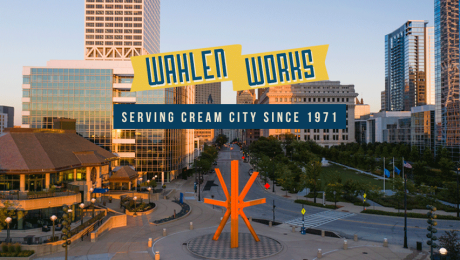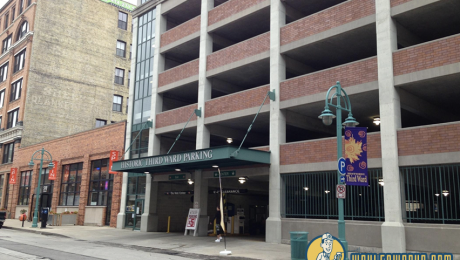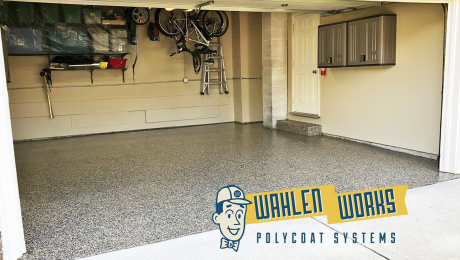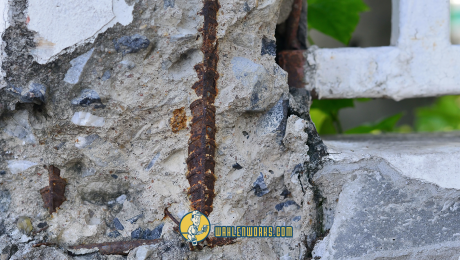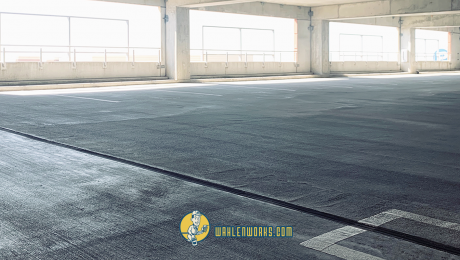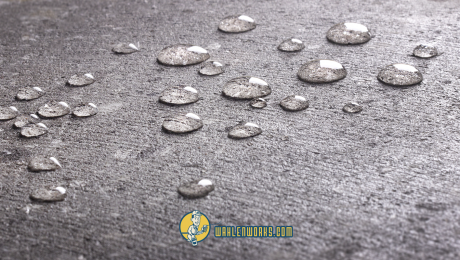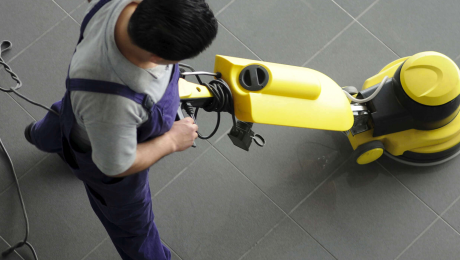Our Latest Blog Posts
Exploring Trends in Facility Management in 2021
2020 proved to be a challenging year for facility management. Given the ongoing COVID-19 global pandemic, many buildings and parking structures were shut down for extended periods of time, and countless events were postponed—due to inactivity as a result of related quarantine and social distancing efforts.
This year, however, as positive case numbers go down and the number of vaccinated people goes up, the world has begun to slowly resume its usual routine once more. Learn what this means for facility managers, including what trends you can anticipate in facility management during 2021, and how Wahlen Works is here to help.
Facility management trends in 2020
Facility managers are responsible for a building or facility’s maintenance, including operational duties, productivity support, risk management, and more. Their goal is to “make sure the places in which people work, play, learn, and live are safe, comfortable, productive, and sustainable,” according to the International Facility Management Association (IFMA).
In many instances, preventative maintenance, including commercial power washing and pavement marking, was delayed last year. More buildings were shut down; parking and event revenue was lost; less snow and salt damage occurred to structures; and money wasn’t spent to get facilities cleaned.
Upcoming trends in 2021
Major events in Milwaukee, such as the Wisconsin State Fair, Irish Fest, and Summerfest, all of which didn’t occur in 2020, are set to open their gates for people this year in 2021. For events alone, this means preparing the grounds they occur on, the parking structures people will park in to attend said events, and more.
To get everything ready for a resurgence in the use of buildings, facilities, parking structures, and event spaces across the city, however, facility managers will be searching for the right companies to help them prepare accordingly. There’s no company better than Wahlen Works to tackle this backlog of work that must now be attended to.
Wahlen Works is here for all of your full-service pressure washing, pavement marking, and concrete sealing and waterproofing projects—offering quality service at an affordable price. Client satisfaction is our number one priority, which is why we create a detailed plan for you before starting any job. Having worked with large and small businesses throughout the Greater Milwaukee Area for over 50 years, we guarantee both efficiency and expertise for all of your facility management needs.
Let Wahlen Works help you get your facilities summer-ready! Contact us today for a free quote.
- Published in Latest, Marking, Parking Structures, Sealing, Washing
Construction Happenings In and Around Milwaukee – Spring 2021
Those from the Midwest—or who have lived here long enough—know, there are only two seasons in this part of the country: winter and construction. Once all the snow has melted and the warmer weather is here to stay, construction season begins, including road repair.
Meanwhile, over at Wahlen Works, we’ll be busy pressure washing to clean parking structures, remove graffiti, and tidy up your favorite sidewalks and walking paths, so you can start summer off right. We also handle pavement and ground marking services—ready to get the area’s parking lots, roadways, event grounds, and more ready for you to enjoy.
Both old and new builds will be keeping all of us plenty busy in 2021, but here’s some more information on what types of new construction you can expect in and around Milwaukee this year.
COVID-19 relief plan for highway projects
In Wisconsin, there is a backlog of road improvement projects to be done, as reported by Wisconsin Public Radio (WPR), and thanks to a COVID-19 relief plan passed in late 2020, the state is set to receive “nearly $150 million in the next two years,” which “will allow the state to complete 42 highway projects,” largely made up of bridges that need to be repaired or replaced and highways that need to be resurfaced.
“The funding was able to fill in for the lost revenues we had (in 2020) because of gas tax revenues being lower than usual due to decreased traffic,” said DOT Secretary Craig Thompson in the aforementioned WPR article. “It allowed us to not only not have to cut back on projects, but to advance 42 projects earlier than was previously anticipated.”
Construction continues for Komatsu Mining
In their new headquarters in the Harbor District, Komatsu Mining Corp., a company that both manufactures and services industrial mining equipment, expects to have employees in-office this fall, with full occupancy to come in spring 2022.
The three-story office building on Greenfield Avenue is still currently under construction and “connects to a two-story lab and two-story training building and museum, with all three structures totaling 176,000 square feet,” according to the Milwaukee Journal Sentinel.
Next door, the 430,000 square foot manufacturing building is starting to take form, as well. The “project will include a 650-stall parking structure, a 250-space parking lot, and a public RiverWalk,” too.
Future construction plans for the city
Come 2022, construction for the approved $420 million expansion on the Wisconsin Center, a convention center in downtown Milwaukee on Wisconsin Avenue, is set to begin—although prep work may start as early as July 2021.
According to the Journal Sentinel, “the project will add 112,000 square feet to the facility’s main exhibition hall for a total of 300,000 square feet,” which will allow the Wisconsin Center “the ability to host two major events at the same time.” The expansion also includes the addition of a second ballroom, outdoor terrace, meeting rooms, indoor parking, and loading docks.
Take advantage of the summer months to have Wahlen Works clean up your space! Get a quote today for commercial pressure washing and striping.
- Published in Latest
Keeping Milwaukee Clean for 2021 Summer Events
The big news coming out of Milwaukee this year is that there will be Summerfest. It will take place at the tail end of summer on September 2-4, 9-11, and 16-18, 2021 and feature more than 1,000 performances on 12 stages at its home in the Henry Maier Festival Park.
There’s going to be a lot of fun. There’s also going to be a lot of trash and spills and stains and mess. Oddly enough, we don’t mind that. After a year of lockdowns and restricted activity, a lot of people are ready to get out and have fun and we’re ready to get out and clean up after them. As we all look forward to Milwaukee’s exciting and eventful summer, we’ve got some recommendations for you for festivals and events that are on the calendar as we write this.
Polish Fest. A living educational showcase of the arts, culture and tradition that is uniquely Polish. June 11-13, 2021 at Henry W. Maier Festival Park. This festival is a Milwaukee treasure. If the shows, food, cultural events, and youth Chopin competition aren’t enough to tempt you, go for the vodka tasting.
Strawberry Festival in Cedarburg. The 36th annual Strawberry Festival returns to Cedarburg this summer, on June 26-27. This free, family-oriented festival draws thousands of people each year to celebrate the humble strawberry, enjoy live music, browse and purchase original artwork from hundreds of artists, and enjoy some of the most decadent homegrown strawberries in the area.
Bastille Days. This festival is held in Milwaukee’s Cathedral Square Park and is one of the largest French-themed celebrations in the United States. The free four-day bash attracts over 250,000 visitors annually who enjoy live music, an international marketplace, chef and wine demos, French and Cajun cuisine, roaming busker entertainment and a signature 43-foot Eiffel Tower replica offering hourly light shows.
Croatian Fest. Wisconsin’s oldest continuous running ethnic festival will be back on July 17, 2021 at Croatian Park in Franklin. The cultural Program starts at 2:00PM featuring Croatian music and dance groups. There will be home made bakery and desserts and a full bar with Croatian beers and cordials. Traditional Croatian rotisserie is available and sells out quickly so pre-order your rotisserie lamb, pork and chicken.
Mexican Fiesta. Milwaukee’s Mexican Fiesta brings the sound, culture, and taste of México to Milwaukee’s lakefront on August 27, 28 & 29 this summer. Join in on the fun with three days of food, Mariachi, and Fiesta for everyone. The Mexican Fiesta is more than just a celebration; it is a vigorous declaration of community spirit at its best. This festival honors culture, tradition, and family. Don’t miss it!
German Fest of West Bend. Milwaukee’s German Fest has canceled its celebration for 2021, but that doesn’t mean you can’t still get your beer, brats, and sauerkraut in the greater Milwaukee area. West Bend’s German Fest is scheduled for August 26-29, 2021 in downtown West Bend at 5th Avenue and Walnut. As an added bonus, all proceeds benefit Habitat for Humanity.
Milwaukee Air and Water Show. Join the USAF Thunderbirds at Milwaukee’s lakefront July 24-25, 2021. The Milwaukee Air & Water Show is Wisconsin’s premier free, family event of the summer and one of the top air shows in the Midwest. Experience the thrill of aerial and water-based acrobatics in a family-friendly environment. It’s a must-do for everyone who has been cooped up too long.
Wisconsin State Fair. The grand-daddy of them all — The Wisconsin State Fair — is back August 5-15, 2021 and we can already taste the cream puffs and fried butter. The first State Fair was held in Janesville along the banks of the Rock River in 1851. In 2021, The Fair will celebrate 170 years of tradition and once again welcome over one million Fairgoers over the course of its 11-day run. We’ll see you there.
It’s no surprise that when Milwaukee’s streets and sidewalks get busy with cars and people, they leave plenty of evidence that they were there. Get ready to welcome your friends and neighbors as they enjoy everything Milwaukee has to offer this summer. Start with a sweeping and pressure washing this spring and by August you’ll certainly need a second one, along with possibly a striping and signage refresh. We recommend scheduling your appointments now so that you can get outside and enjoy the fun.
- Published in Latest
Meet Jim Wahlen, Milwaukee’s Trusted Concrete Expert
Jim Wahlen is well-known in the Milwaukee area as an expert in the care and maintenance of concrete structures and exteriors. He is leading the company his grandfather founded in 1971, building a hard-working team, and staying at the forefront of technology.
While he was born into the business, he doesn’t take it for granted. After working on the front lines of Wahlen Works in high school and college, he spent eight years in the corporate world. It was enough time for him to gain valuable business experience, and also to realize he wanted to take on the challenges, and experience the satisfactions, of running the family business.
We spent a few minutes talking with Jim about facility maintenance, excellence on the job, and growing the family business.
Tell us a little bit about your background in the corporate world. Where did you work and what did you do?
I studied commercial recreation and tourism in college. After graduation, I worked at the Great Wolf Lodge in the Wisconsin Dells for several years, then went to work for Wyndham Worldwide as a financial auditor. It was during this time that I came to realize the importance of personal relationships and the critical role of small, family-owned businesses to our communities.
You’ve been a part of the family business for more than 12 years now. What are your day-to-day responsibilities and how has that changed over the years?
At first I was very much in the business, on the front lines, doing the work. Over time, I took on more of the management and leadership responsibilities, where I have focused on recruiting talent and building our team. More recently, I’ve been looking for ways to grow and expand the business, developing a streamlined management system, and looking to the future.
What are you most proud of?
I’m most proud of the culture we’ve created here. We have a tight knit group of people that work well together. They are focused on the task at hand and ensure that we produce a very high quality of work on a consistent basis.
You are experts in maintaining concrete. What are two or three things you wish people knew about concrete that they don’t?
First, that concrete is very long lasting if you take care of it. Most people think that concrete requires little or no maintenance, but that’s not the case in our climate. People don’t realize that concrete is porous. It’s like a sponge with voids that liquids, such as water and chemicals, can penetrate. Once water has penetrated the concrete, Wisconsin’s freeze-thaw cycle begins to work on it, degrading it rather quickly. Preventative maintenance slows this process and in some cases, can eliminate it almost entirely.
Second, all concrete isn’t the same. Some of it is poured above grade, some is poured below grade, and some is installed in panels. Each of these require different methods of cleaning and maintenance. For example, many newer parking structures have been built with concrete panels and they can move around a little bit by design. The caulking between the panels needs to be maintained differently than the concrete. Also, traffic patterns need to be taken into account when you’re working on the upper levels so that people on the lower levels are protected while you’re doing your job.
What are some of your favorite success stories?
We often encounter epoxy in structures. It discolors pretty quickly with traffic. Heat and friction from the car tires makes it worse where cars turn in the structure because they all turn in exactly the same place. With our knowledge of chemicals and cleaning solutions, we know what it takes to clean it without damaging the surface. We’re able to get it a lot cleaner than our competitors, which makes our customers very happy.
Do you have any cautionary tales to tell?
Sometimes when historic buildings are renovated and turned into residences, there are unwelcome surprises. In one case that we know of, drainage issues weren’t taken into account when storage units were installed in the garage area. They were flooded and ruined the resident’s property. That could have been avoided if we had been called in for a pre-renovation consultation.
In another, there was a parking structure where the maintenance company didn’t know how to remove stains properly and didn’t do wastewater recovery. By the time we were called and fixed the problems, it ended up costing the company more than if it had been done correctly in the first place.
What are some things you do differently from your competitors that may fly a little bit under the radar but have a big impact on the results customers see?
It starts with our quoting process. We want to see the facility in person, analyze the project, and develop a scope of work. We know to ask the questions most people wouldn’t think to ask; for example, how do you plan to vacate an entire garage at once in a downtown area with limited street parking. We work with our customers to prepare for that ahead of time. Because we work with so many people, we often know someone who can accommodate them for the day while we get the job done.
We also invest in state-of-the-art equipment, with replacements ready to go as back-up if necessary. This way there are no delays due to equipment failure which greatly reduces the risk of having to cancel and reschedule service.
What are your predictions for the future of your industry?
Pressure washing and related cleaning is going to become more and more environmentally conscious. Wastewater recovery requirements will increase. Knowing which chemicals to use in order to maintain a green clean standard will become critical.
When it comes to pavement marking, keeping abreast of the changes in symbols is very important. For example, the handicapped parking symbol is being redesigned to increase visibility and be more sensitive to the feelings of people in wheelchairs.
Regarding materials, longer lasting paints are being developed all the time. It’s important to stay on top of those changes and the latest technologies.
How do you envision the growth of Wahlen Works growing over the next several years?
We will definitely be staying on top of the technology and upgrading our materials and processes in line with that.
Our culture allows us to do things more efficiently to keep costs under control, which gives our customers better service at a better price. We spend, and will continue to spend, a lot of resources on training programs so best practices are being used. We offer employees continuing education so they are all trained on the latest methods.
We are a place that people want to work and we want to continue to be that. We want their experience with us to enhance their life, not just be a place to go for a paycheck.
We also want our work to enhance the lives of our customers and will continue to strive for that.
- Published in Latest
Maintaining The Historic Third Ward
Unless you live in the Historic Third Ward, when you visit you’ll need a place to park your car. It’s not the first thing you’re likely to think about — and you probably won’t — unless something unpleasant catches your attention.
It’s our job to make sure that doesn’t happen in the parking facilities and on the sidewalks we maintain. In the Third Ward, you’re surrounded by beautiful historic structures that have been reimagined for the 21st century. We love the stories of these buildings and thoroughly enjoy our part in preserving their facilities. Let us tell you about some of the properties we serve.
The Dye House
In September 1922, a small announcement appeared at the bottom page 93 in “The Underwear & Hosiery Review”. It said, “The Phoenix Hosiery Co., of Milwaukee, will start work soon on a new addition at Buffalo and Milwaukee Streets to cost $600,000. The building will be eight stories high and is expected to be completed about the first of the year.”
Nearly 100 years later, the P.H. Dye House is still the Third Ward’s tallest building, but has recently been completely renovated as an office and retail space that marries the industrial design of its past with the creative vision of its future.
The historic landmark is called the “Dye House” because it’s the factory where Phoenix Hosiery employees dyed the high-end silk stockings that were becoming so popular during the “Jazz Age”. The concrete building, designed by Lockwood and Greene Co,” was listed on the National Register of Historic Buildings in 1984.
In fact, Milwaukee’s Third Ward was once well-known for its factories. Roughly 18 of the 70 buildings in the National Register of Historic Places were used for manufacturing at one time or another. Today, these beautiful and well preserved buildings are home to luxury apartments, live-work spaces, restaurants, and office spaces for a variety of eclectic tenants.
The Phoenix Building
Several of those factories belonged to Phoenix Hosiery, formerly Phoenix Knitting Works. It was one of Milwaukee’s most prosperous companies in the early 20th century. In addition to the Dye House, the company eventually had six locations in Milwaukee and three in the Third Ward. The Phoenix Building, a 7-story brick structure located at 219 N. Milwaukee St., was known as building #4 when it was completed in 1917.
The Phoenix Building property record at the Wisconsin Historical Society says, “The dye and wash area was in the basement, printing, stock and shipping on the first floor, packing on the second and knitting on the floors above…Since 1956 this building has been used by several firms for offices, warehouses and light manufacturing.”
The Phoenix building is currently home to ad agencies, law firms, investment companies, and the Historic Third Ward Association. It also boasts an amazing collection of early 20th century vintage ads for women’s hosiery as an homage to the building’s past.
The Marine Terminal
The Marine Terminal Building has been occupied by a wide variety of tenants over the years, including Herb Brumder who manufactured his Porto-Power hydraulic “workshop on wheels” on the second floor in the 1930s. He may have been there for the “three freight elevators, the heavy load capacity of its floors, its fireproof construction and its location near downtown.”
The building was designed by Albert Hecht and completed in 1918. It was a sought after warehouse location because it allowed access to the lake with only one bridge opening. Today it houses 83 luxury riverfront condominiums with heated underground parking, access to all the Third Ward offers, and fantastic views.
The Mackie Building
To walk past the Mackie Building is to step back 140 years in time. It has a fascinating history as the first Chamber of Commerce in Milwaukee. The Exchange Room “contained the first trading pit ever constructed. The pit was designed by the Chamber’s secretary, William J. Langston, and was widely copied by other grain exchanges.” After the Chamber moved out in the 1930s, other tenants moved in and the interior was renovated to keep up with the times. In 1981, the Landmarks Commission noted that “the exterior of the building is essentially as it was in 1880.” (source)
The building was added to the National Register of Historic Places in 1973 and is currently home to the Mackie Flats Apartments. The apartments take up the top three floors replacing the 100-year old office buildings that used to be there. Residents are within walking distance to all the attractions of the Third Ward. As they step outside, they can glance up at the renovated clock tower where it still says “Chamber of Commerce”, take a few steps to catch the streetcar, or stroll leisurely to their destination.
Historic Third Ward Parking
Visitors come to the Historic Third Ward to work and to play. The 10-square block area is home to more than 500 businesses and people come year round for dining, nightlife, shopping, salons, healthcare, galleries, the performing arts, and events. The Henry W. Maier Festival Park is there, along with the Italian Community Center, the Milwaukee Public Market, and the Third Ward Riverwalk.
The historic warehouse vibe is still alive and well, only now instead of needing room for wagons, visitors need places to put their cars. They can park in the Historic Third Ward parking structures on Milwaukee Street and Chicago Street.
When you visit the Third Ward, you probably don’t think much about the parking or sidewalks and we think that’s a great thing. We keep the parking facilities and sometimes the sidewalks of these historic buildings immaculate so that visitors and residents are only aware of the beauty and history of their surroundings. We love that job!
- Published in Latest, Parking Structures
Get Your Dream Garage With The Best Available Concrete Floor Finish
When you think about your dream garage, what do you imagine? A high-top bar in front of a wide screen and next to a beer fridge? Your vintage red Porsche parked on a showroom quality surface? A pristine floor underneath the wheels of your immaculate Harley?
The cure for garage envy starts with the floor. While your dream garage may eventually need insulation, climate control, and the best in high tech; without stunning, showroom-quality flooring nothing else matters.
But it’s not just about looks. Garage floors take a pounding and have to hold up under the heavy demands of everyday use. You want a floor that is impervious to stains and spills from oil, gas, and other car fluids. With the Wahlen Works PolyCoat system, you can have both function and form; rugged durability and limitless chip, color, and top coat options.
Concrete Floor Finish Process
The most important contributing factor to the success of a concrete floor finishing project is the preparation work. Our meticulous process ensures that you will enjoy your dream garage for years to come and we offer a lifetime warranty to back that up. Our 5-step process includes:
- The initial inspection and project site assessment
- Determining the products to be used and the color choices
- Preparing the surface so that it is clean, sound, and dry
- Patching and priming
- Product and system installation
Assess
Most of the garage surfaces we see are deteriorating and have spalling and chipping.
Our process starts with the initial site visit where we assess the condition of the concrete and work with our customer to determine the desired end result. We check to see if the concrete is coated or uncoated and if the substrate is degraded. We measure contamination levels of grease, oil, and chemicals and we document all cracks and defects. Then we test the concrete to determine the moisture level because that determines which materials we will use. If the concrete has excess moisture we use a base coat that has a vapor barrier built into it.
Color Options
From there we present an almost limitless number of color options, and we bring samples of the most popular ones so that the homeowner can get a first-hand idea of how the finished floor will look. Designer colors offer the ultimate “wow” and can achieve the look of granite, marble, or terrazzo if that’s what is desired. When we come back to do the installation, we are ready to go and can complete the project in one day.
Installation
On installation day, we start by grinding off the top layer of the concrete. We have a walk-behind planetary concrete grinder which is ideal for smoothing a garage floor and opening up the concrete at the beginning of the installation. In order to prepare the surface properly we generally remove 150-200 lbs of concrete from a standard 2-car garage.
Next, we use a repairing compound to fill in areas that have chipped or spalled and make the entire surface smooth and even. Then we put the base coat down, followed by the vinyl flake color which the homeowner has previously selected. After it cures for a few hours, we put the top coat down.
The differentiator in our service is thorough preparation. Every step in our process is important and we don’t skip any or cut corners. There are several reasons that concrete coating systems fail: poor preparation of the surface, the amount of moisture not accounted for, and low quality coating products. Our process ensures that none of this will happen to you.
Polyurea vs. Epoxy
Not all products for upgrading your garage floor are created equal. Our PolyCoat concrete coating system uses polyurea rather than epoxy. It is the best choice for your garage floor — hands down. Frankly, the two products are not even close in terms of quality, appearance and longevity.
Polyurea is a two-compound, 98% solids basecoat. It is 20x stronger than epoxy and has 98% percent flexibility compared to 2% for epoxy. The higher solid content increases the long-term durability of the floor coating. The flexibility allows it to expand and contract where epoxy will crack and chip. Polyurea is UV stable so won’t discolor with sun. It can be used outdoors and epoxy can’t.
The main advantage, and the thing that sets the polyurea concrete finish system apart from all others, is that it’s a one-day install. You leave for work and when you get home, we’re done. Epoxy garage flooring requires four to seven days to complete, during which time your garage is unusable.
The cost of using epoxy is less upfront, but when your epoxy floor starts to look worn again in a few years, the disappointment will set in. You want your stunning new floor look to last for years. Isn’t it better to spend a little more and know that you’re getting the best product and expert installation?
Benefits of a Premium Garage Floor Finish
In addition to the superiority of the product, there are a number of additional benefits of our PolyCoat system.
After installation, you can begin enjoying your new garage immediately. By the end of the day, you can walk on it and, after 24 hours, it’s ready for vehicles. After-care instructions for some floor coating installations read like a complicated user manual — do this for 12-24 hours, then do this for 1-2 days, and finally do this for 3-7 days. With our floor system, you won’t need to download a pages-long care guide to avoid damaging your new floor.
Furthermore, maintenance is a breeze. The product is resistant to oil, gas, coolant, salt, abrasion, and impact. It maintains its high glossy finish and can be easily cleaned with water and a sponge. The finish also protects your floor from Wisconsin’s freeze-thaw cycle and winter deicing chemicals.
Most importantly however, a PolyCoat concrete floor finish adds to the value of your home at the same time it adds to the beauty of your garage. The modern look of a high-quality floor coating is certainly a nicer look than damaged concrete and it will make your garage and entire home stand out to prospective buyers.
Why Wahlen Works?
We know concrete.
Our track record as a company testifies to the truth of that statement. Other companies can offer lifetime warranties but they may not be in business long enough to make good on their promise. We have been a trusted service provider in Milwaukee since 1971 — almost 50 years. We are going to be here from the moment you make your first call until the moment you sell your house.
Additionally, you can count on your new PolyCoat garage floor to last at least 25 years. We offer a lifetime warranty and if you sell your house within the first year after coating, we will transfer the warranty to the new owners.
Let luxury be the first experience you have when you come home at the end of the day. A high performance PolyCoat concrete floor finish gives you the dream garage you’ve always wanted. Our product and process give you beautiful finishes and durable, long-lasting performance. Don’t settle for anything less than the best.
Chloride Contamination in Concrete Structures
We talk about chloride contamination frequently because of the damage it can do to concrete that isn’t properly maintained.
Chloride contamination comes from rock salt, the primary deicing agent used in Wisconsin. Rock salt is the mineral formed from sodium chloride. WisDOT uses an average of 526,000 tons of rock salt statewide each season. Other chloride-based deicers used less frequently are calcium chloride and magnesium chloride. All chloride deicers will initiate corrosion of the steel reinforcement if they penetrate the concrete.
Implications for Parking Garages
A major contributor to parking garage deterioration is corrosion of embedded steel. The corrosion problem is not new, but awareness of the problem has been getting more attention in recent years.
As steel corrodes it expands, causing fragments of concrete to chip away, which exposes steel further, leading to even more damage. In addition, the rebar becomes more easily breakable, which in turn reduces the garage’s structural capacity. Unfortunately, by the time the damage is discovered, the corrosion of the steel is usually quite advanced.
To put it more scientifically, “There are two consequences of the corrosion of steel. First the products of corrosion occupy a volume several times larger than the original steel so that their formation results in cracking…This makes it easier for aggressive agents to ingress towards the steel, with a consequent increase in the rate of corrosion. Second, the progress of corrosion…reduces the cross-sectional area of the steel, thus reducing its load-carrying capacity.”
Reducing Chloride Contamination
There are a number of ways to lessen concrete deterioration due to chloride contamination and reduce its influence on the service life of your facility. Some, such as adding corrosion inhibiting compounds, need to be implemented during construction. For an existing structure, protection is your best option.
In a 2018 paper published by engineers at the University of Wisconsin – Platteville, the authors recommend the use of a penetrating solution as one option. They say, “Another method to protect concrete from deicing/anti-icing chemicals is the application of topical treatments such as penetrating sealers. Penetrating sealers can seal the concrete, hence reduce the ingress of water and chemicals.”
In the spring, when the ice and snow have melted, many property owners will be greeted by the sight of blemished concrete where the surface has flaked off. As bad as that is, the unseen damage to the steel reinforcement has also likely begun and may not be noticed until it’s become expensive to repair. Before that happens, consider applying a waterproof barrier to your concrete structure.
- Published in Latest, Parking Structures
Preventative Maintenance For Parking Structures
We’ve worked in a lot of parking structures during our 49 years in business, some as small as 5,000 sq ft and others larger than 1M sq ft. Whether yours is a parking garage, a parking ramp, or a parking lot; it is a significant part of your real estate portfolio and requires both routine and preventative maintenance to maintain its value.
As an owner or manager of a parking structure, you’re well acquainted with the damage that naturally occurs over time. Potholes, cracks in the concrete, and corrosion are bound to appear: but their presence can be minimized, and sometimes almost eliminated, with regularly scheduled maintenance.
Your parking structure is the workhorse of your business and often the first point of welcome for you customers. It experiences direct exposure to vehicle traffic, weather, chemicals, and grease on a daily basis. It only takes a few missed deep-cleans for minor deterioration to start. These can turn into problems beneath the surface of the concrete before you know it.
An effective maintenance plan should include all the periodic tasks that are required for smooth day-to-day operation, as well as the tasks performed to avoid future repairs and protect the owner’s investment.
Sweeping and Washing
Your garage needs frequent sweeping — at least monthly — and quarterly pressure washing to remove sand, dirt, and other substances that wear down its concrete surface. Because of human nature, a clean garage is more likely to stay that way because people are less likely to litter in a well-maintained environment. In addition to extending the life of the facility, a clean, well-kept garage is inviting and gives you a good reputation.
In Wisconsin, it’s especially important to schedule a pressure washing in the early spring to remove deicing products and again in the fall to remove leaves and make sure the drainage system is clear.
Pavement Marking and Signage
Your maintenance schedule should include attention paid to pavement markings and signage. Parking lot striping needs to be restored as soon as it begins to fade or wear away. Concrete walks, drives, and curb landings might need to be repainted as often as twice a year for safety purposes.
Waterproofing
The main enemies of the structural integrity of your parking structure are water penetration, chloride penetration, and freeze/thaw damage. The best way to prevent the damage is to prevent penetration into the concrete with a waterproofing barrier. Waterproofing systems that protect the concrete surface extend the life of a garage and make routine maintenance tasks easier to complete.
The ideal waterproofing system uses a calcium silicate gel to penetrate the concrete and fill cracks, pores, and capillaries; forming a subsurface barrier that can’t be peeled, chipped, or scraped away.
A regular maintenance program is critical to preserving your garage and providing excellent service to your customers. Call us to talk about a schedule that perfectly meets your needs. (414) 771-0884
- Published in Latest, Parking Structures
The Benefits of Waterproofing Your Concrete
Water is the enemy of your parking structure. It can penetrate the concrete causing costly damage to its steel reinforcement. Considering the large capital investment parking structures require, it’s worth taking some time to consider how best to protect them, not only from water, but also from deicing agents and freeze/thaw cycles.
We believe that the best way to prevent concrete damage is to prevent water and chemical penetration in the first place through the use of a waterproof barrier. Membranes and silane sealant do provide some protection but have drawbacks that waterproofing does not.
For that reason, we recently partnered with Alchemco, manufacturers of the TechCrete 2500 Waterproofing system—a long-term solution that creates a waterproof barrier inside the concrete.
TechCrete 2500 offers the following benefits:
-
It has no volatile organic compounds (VOCs). VOCs are “any compound of carbon, excluding carbon monoxide, carbon dioxide, carbonic acid, metallic carbides or carbonates, and ammonium carbonate, which participates in atmospheric photochemical reactions.” In other words, emitted gases from certain solids and liquids. Because TechCrete 2500 is VOC-free, if the concrete structure is ever demolished, the concrete remains recyclable, which is good for the environment.
-
It is a penetrating solution that forms a calcium silicate gel which fills cracks and capillaries up to 2mm wide. Because it forms a subsurface barrier, it can’t be chipped or scraped away by snow plow blades and it will continue to seal future cracks up to .04mm wide.
-
There’s no need to close your parking facility during business hours in order to complete the installation.
-
One of the best features of TechCrete 2500 is its longevity. It makes the concrete surface more dense which allows it to stand up to traffic from people and cars. It also has the best warranty in the industry ranging from 15-30 years depending on the current condition of the structure.
-
A TechCrete 2500 treated surface is easy and inexpensive to maintain, requiring only regular sweeping and a yearly pressure wash.
Parking areas are a large capital investment. The longer they last, the greater the return on your investment. While the value of regular cleaning and maintenance can’t be overstated, the best protection comes from not allowing the water to penetrate the concrete in the first place. Read more about our concrete waterproofing service here.
- Published in Latest, Parking Structures
Your 2020 Cleaning and Maintenance Schedule
January through March
April through June
July through September
October through December
- Published in Latest
- 1
- 2


